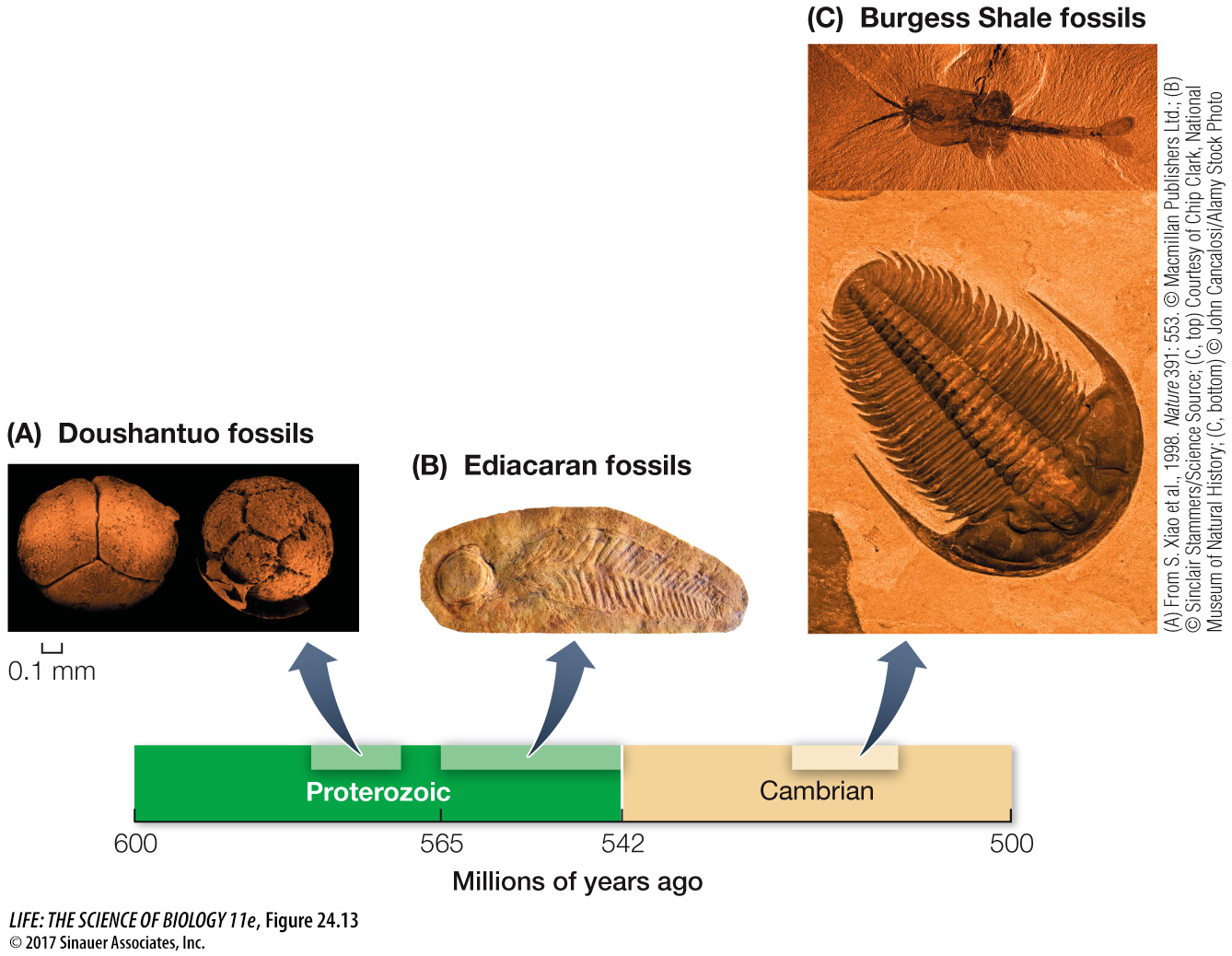Precambrian life was small and aquatic
519
Life first appeared on Earth about 3.8 bya (Figure 24.12). The fossil record of organisms that lived prior to the Phanerozoic is fragmentary, but it is good enough to establish that the total number of species and individuals increased dramatically in the late Precambrian.

For most of its history, life was confined to the oceans, and all organisms were small. For more than 3 billion years, all organisms lived in shallow seas. These seas slowly began to teem with microscopic prokaryotes. After the first eukaryotes appeared about 1.5 billion years ago, during the Proterozoic, unicellular eukaryotes and small multicellular animals fed on the microorganisms. Small floating organisms, known collectively as plankton, were strained from the water and eaten by slightly larger filter-
What limited the diversity of multicellular eukaryotes (in terms of their size and shape) for much of their early existence? It is likely that a combination of factors was responsible. We have already noted that O2 levels increased throughout the Proterozoic, and it is likely that high atmospheric and dissolved O2 concentrations were needed to support large multicellular organisms. In addition, geologic evidence points to a series of intensely cold periods during the late Proterozoic, which would have resulted in seas that were largely covered by ice and continents that were covered by glaciers. The “snowball Earth” hypothesis suggests that cold conditions confined life to warm places such as hot springs, deep thermal vents, and perhaps a few equatorial oceans that avoided ice cover. The last of these Proterozoic glaciations ended about 580 million years ago, just before several major radiations of multicellular eukaryotes appear in the fossil record (Figure 24.13). Many of the multicellular organisms known from the late Proterozoic and early Phanerozoic were very different from any animals living today and may be members of groups that left no living descendants.
